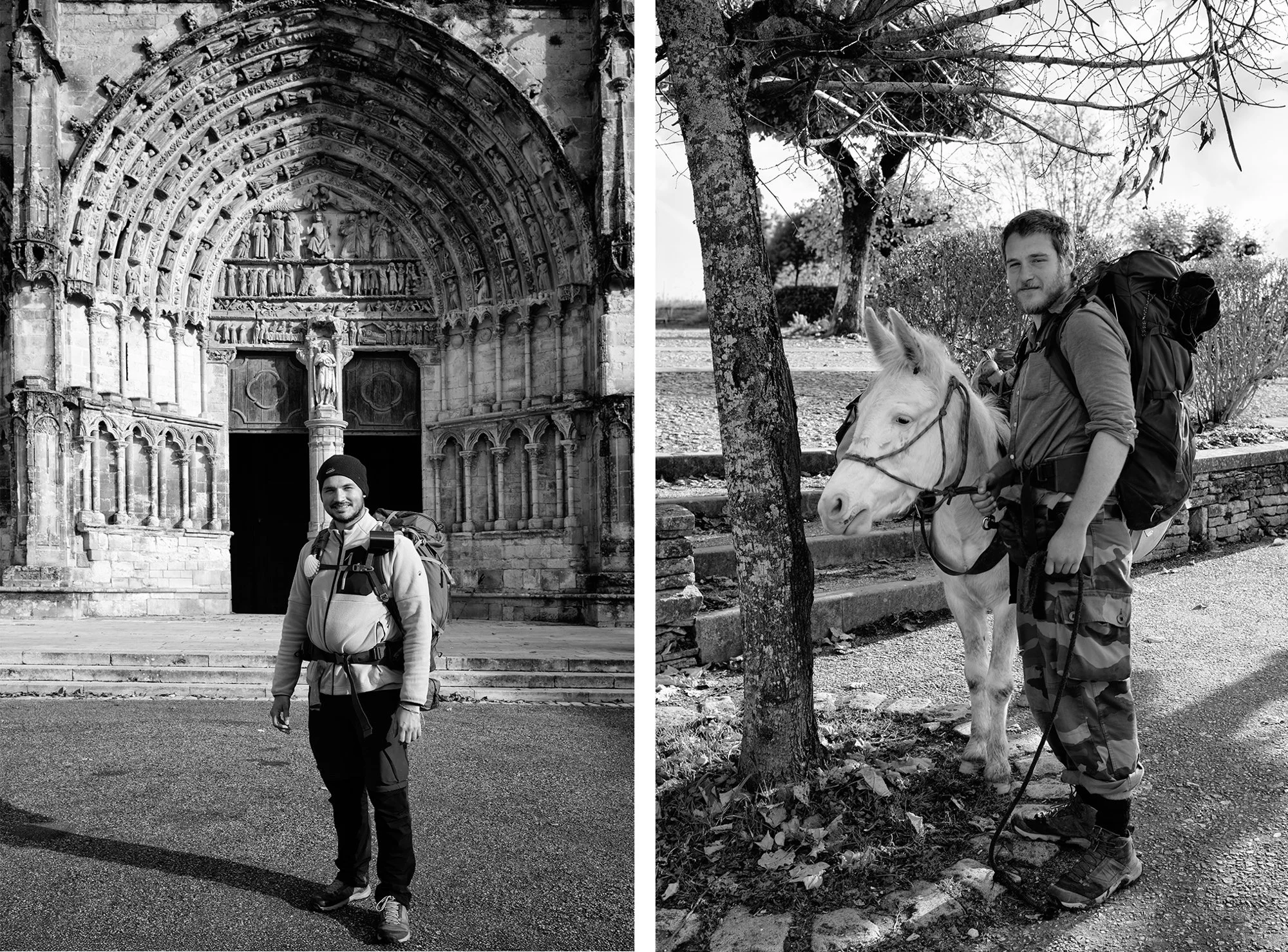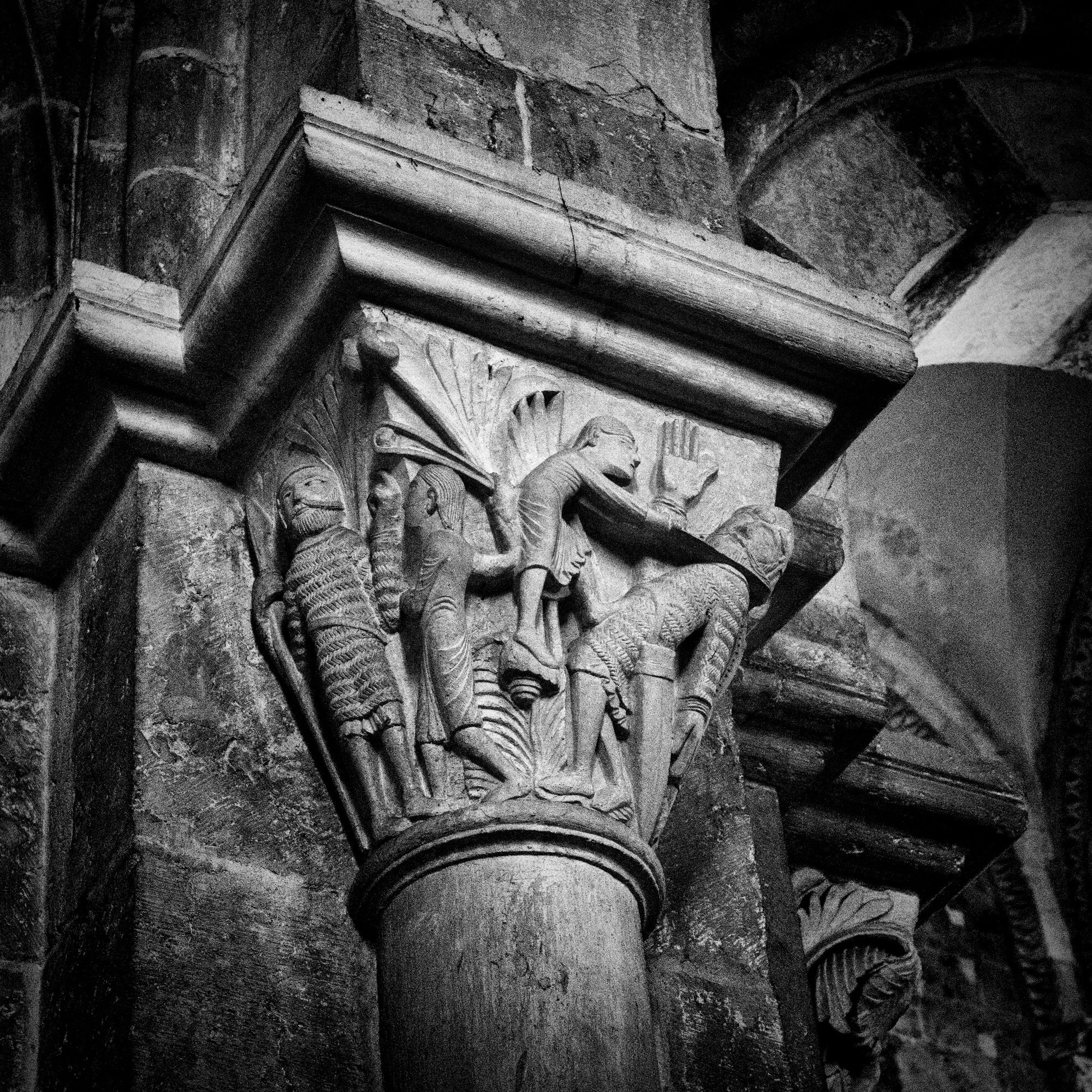Two of the pilgrims we met, one in Saint-Sever, and the other in Vezelay.
Travelling along the Camino de Santiago in November has its own rhythm. Winter is approaching, the days grow shorter, and the great summer crowds have long disappeared. The trail feels quiet now—almost contemplative—and the few pilgrims we do encounter stand out all the more.
We meet them here and there, often alone on the path or resting near a cathedral or a small chapel. Some walk only a section, others are still making their way toward Santiago. A handful travel with a dog, or with a horse carrying their pack. Most walk simply and lightly, moving at a pace shaped by the season.
Because there are so few of them, every conversation feels personal. These late-autumn pilgrims often have time—and stories. Some of them speak about why they walk, what the silence does to them, what they hope to understand or let go of. The simplicity of the Camino in November seems to deepen the lessons they learn: being present, appreciating small things, accepting the rhythm of each day.
For us, these encounters have been genuinely pleasant and full of insight. A short talk can open up entire perspectives on life, choices, and what matters.
To the pilgrims we’ve met along the way: Buen Camino. May the quiet season serve you well, and may the road ahead continue to teach, lighten, and inspire.










